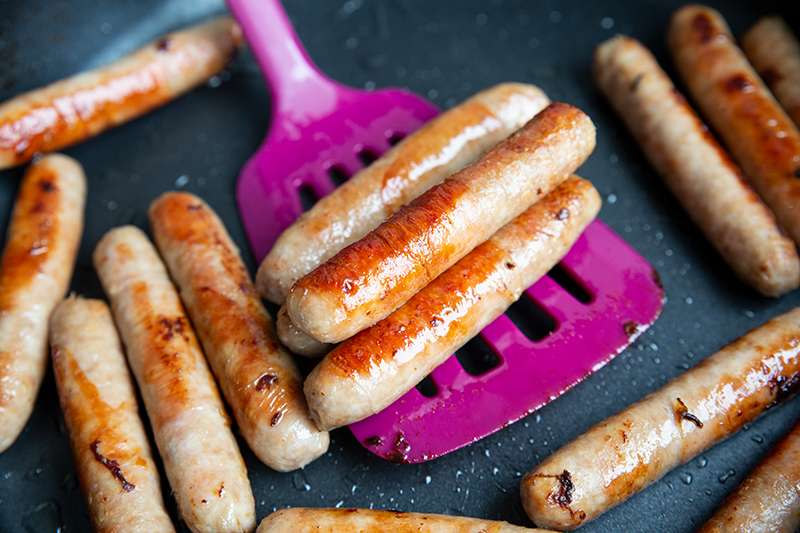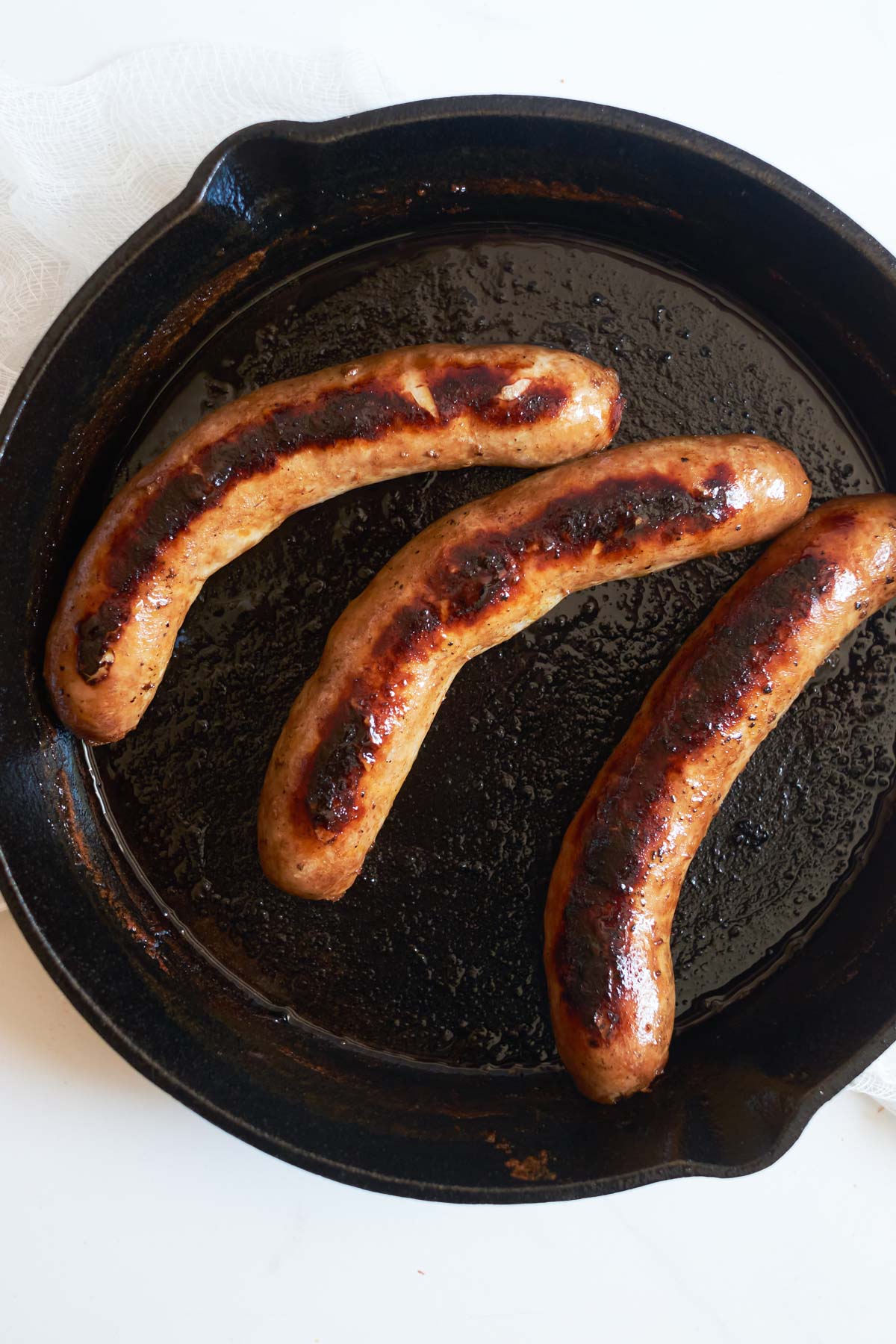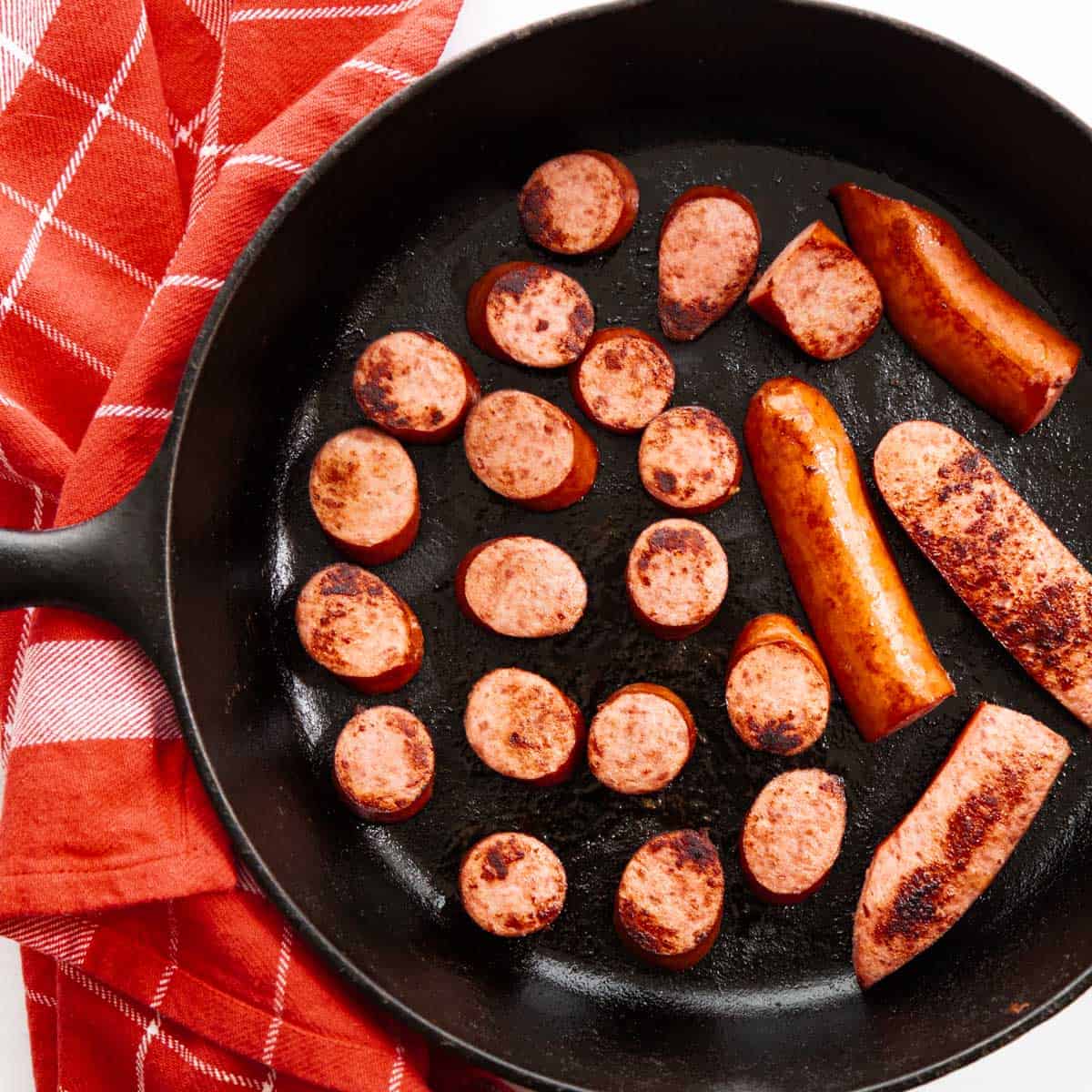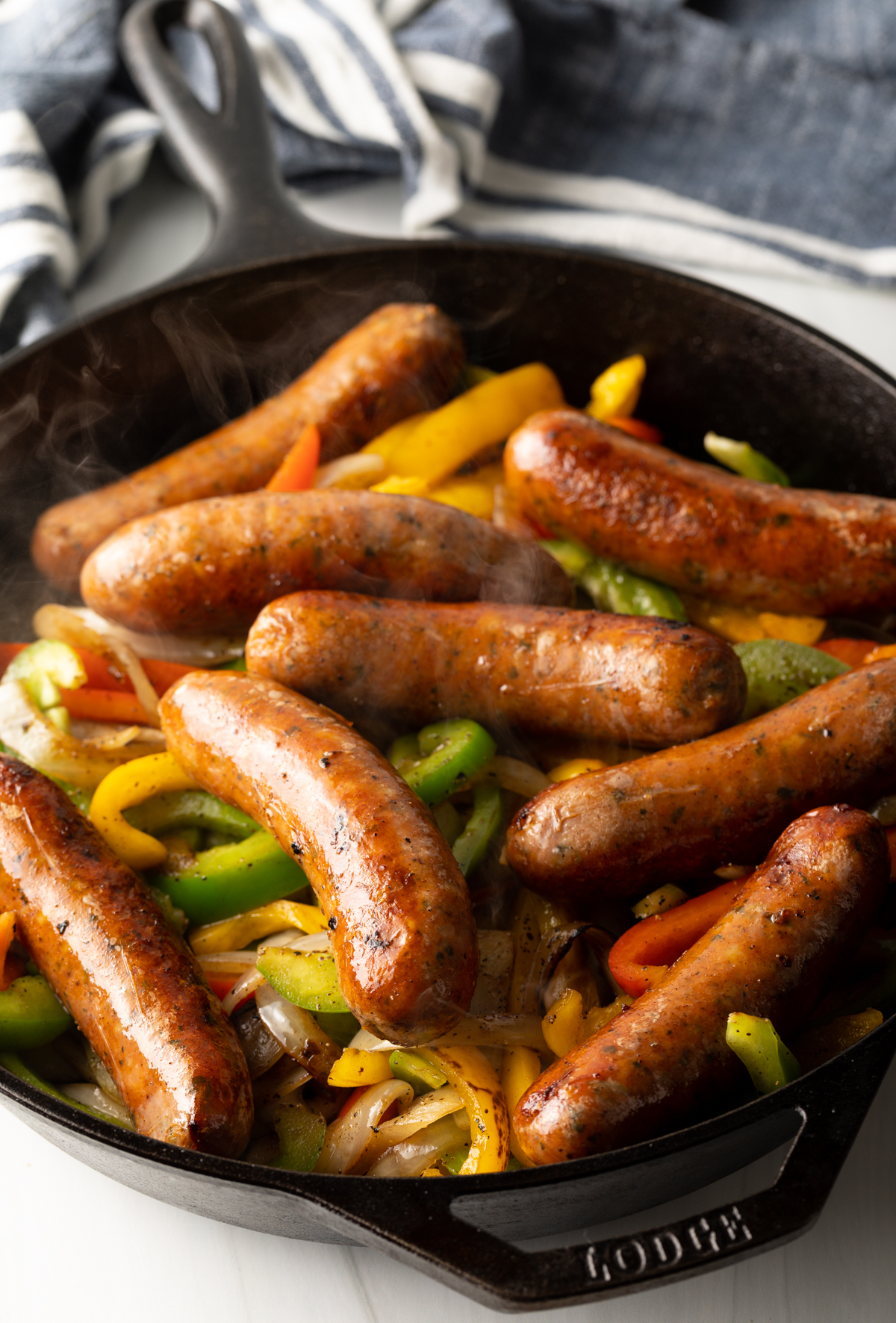Perfectly Cooked Sausage on the Stovetop
I. Introduction

A. The convenience and versatility of cooking sausage on the stovetop
Cooking sausage on the stovetop is a convenient and versatile way to prepare this flavorful and savory meat. Whether you prefer pork, chicken, beef, or even plant-based sausages, the stovetop method allows you to achieve perfectly cooked sausages with minimal effort. You can customize the cooking time and methods based on your preferences, producing sausages that are juicy, flavorful, and cooked to perfection.
B. Exploring the ideal cooking time for perfectly cooked sausage
The ideal cooking time for sausages varies depending on the type, size, and cooking method. Achieving the perfect balance between a juicy interior and a deliciously browned exterior can be a challenge. In this blog post, we will delve into the different types of sausages and their cooking requirements. We will also explore the factors to consider when selecting sausages, such as flavor, fat content, and casing type. By understanding these aspects and following the tips and guidelines provided, you can confidently cook sausages on the stovetop with consistent and delectable results every time.
II. Choosing the Right Sausage

A. Different types of sausage and their cooking requirements
When it comes to sausages, the options are diverse and abundant. From classic bratwurst and Italian sausage to spicy chorizo and gourmet chicken sausages, each type has its own characteristics and cooking requirements. Understanding the specific cooking needs of each type is crucial for achieving the best results.
B. Factors to consider when selecting sausage
While choosing sausages, considering factors like flavor, fat content, and casing type can elevate your culinary experience. The flavor can vary significantly, with options ranging from mild and savory to spicy and bold. The fat content of sausages affects their juiciness and tenderness, making it essential to choose a balance that suits your taste preferences. Additionally, the casing type, whether natural or synthetic, affects the cooking process and texture of the sausage.
III. Preparing the Sausage
A. Pricking the sausage
Pricking sausages with a fork or a skewer before cooking is a common practice that allows excess fat and air to escape, preventing the sausages from bursting or developing an uneven texture. This step is particularly crucial when pan-frying or grilling sausages.
B. Seasoning and marinating options for added flavor

One of the advantages of cooking sausages on the stovetop is the flexibility to season or marinate them according to your taste preferences. You can experiment with a wide range of seasonings and marinades, including herbs, spices, sauces, and even beer. These add immense flavor, complementing the natural taste of the sausage and creating a more tantalizing eating experience.
IV. Cooking Methods for Sausage
A. Pan frying
When it comes to cooking sausage on the stovetop, pan frying is a popular method that allows for even cooking and the development of a delicious, crispy exterior. Follow these steps for perfectly cooked pan-fried sausage:
- Preparing the pan
- Heat a skillet or frying pan over medium heat.
- You can choose to add a small amount of oil or butter to prevent sticking, though not necessary if using a non-stick pan.
- Cooking the sausage on medium heat
- Place the sausages in the heated pan, leaving some space between them to ensure even cooking.
- Cook the sausages for about 4-5 minutes on each side, or until they are browned and cooked through.
- You can gently rotate the sausages occasionally to ensure that they cook evenly.
- Testing for doneness with a meat thermometer
- To ensure the sausages are cooked to perfection, use a meat thermometer to check their internal temperature.
- Pork sausages should reach an internal temperature of 160°F (71°C), while poultry sausages should reach 165°F (74°C).
- Insert the meat thermometer into the thickest part of the sausage without touching the pan or any bones.
B. Boiling

Boiling sausages is a quick and efficient method, especially when you want to precook them before finishing on the grill or adding to a recipe. Follow these steps for perfectly boiled sausages:
- Bringing the water to a boil
- In a large pot, bring enough water to cover the sausages to a rolling boil.
- You can add a touch of salt, herbs, or spices to the boiling water to infuse extra flavor into the sausages.
- Adding the sausages and cooking until they float
- Carefully add the sausages to the boiling water, making sure not to overcrowd the pot.
- Reduce the heat to a simmer and cook the sausages until they float to the surface, indicating that they are fully cooked.
- The exact cooking time will vary depending on the thickness of the sausages, but it usually takes around 15-20 minutes.
- Finishing the sausage with a quick sear for a crispy exterior
- If you desire a crispy exterior, you can finish the sausages with a quick sear in a hot skillet with a little oil.
- Place the boiled sausages in the preheated skillet and cook for about 1-2 minutes on each side, or until they develop a crispy, golden brown exterior.
C. Grilling
Grilling sausages adds a smoky char and enhances their natural flavors. Follow these steps for perfectly grilled sausages:
- Preheating the grill and oiling the grates
- Preheat your grill to medium-high heat.
- Lightly oil the grates to prevent the sausages from sticking.
- Cooking the sausages on medium-high heat
- Place the sausages on the preheated grill, positioning them diagonally across the grates for attractive grill marks.
- Close the grill and cook the sausages for about 5-7 minutes per side, turning them once midway through.
- Rotate the sausages occasionally, ensuring even cooking and preventing them from burning.
- Monitoring the internal temperature for perfect doneness
- To ensure that the sausages are cooked through, use a meat thermometer to check the internal temperature.
- Pork sausages should reach an internal temperature of 160°F (71°C), while poultry sausages should reach 165°F (74°C).
- Insert the meat thermometer into the thickest part of the sausage without touching the grill grates.
V. Serving and Enjoying Sausage

A. Pairing sausage with complementary flavors and side dishes
Sausages can be paired with a variety of flavors and side dishes to create a balanced and satisfying meal. Consider these combinations:
- Classic hot dog-style: Serve sausages in a bun with mustard, ketchup, relish, and sauerkraut.
- Italian-inspired: Pair Italian sausages with marinara sauce, melted cheese, and sautéed peppers and onions.
- Breakfast-style: Enjoy sausages alongside eggs, hash browns, and toast for a hearty morning meal.
- German-inspired: Serve bratwurst with sauerkraut, mustard, and pretzels for an authentic Oktoberfest experience.
B. Tips for achieving a juicy and flavorful sausage every time
To ensure your sausages are juicy and flavorful, keep the following tips in mind:
- Don’t overcook the sausages as they can become dry and tough. Use a meat thermometer to check for the desired internal temperature.
- Avoid pricking the sausages excessively as this can cause them to lose their juices, resulting in a drier texture.
- Let the sausages rest for a few minutes after cooking to allow the juices to redistribute and the flavors to develop.
- Experiment with different seasonings, herbs, and spices to enhance the flavor profile of your sausages.
VI. Conclusion
Cooking sausage on the stovetop offers various methods to achieve delicious results. Whether you choose to pan fry, boil, or grill, incorporating these techniques and tips will ensure your sausages are perfectly cooked, juicy, and bursting with flavor. Pair them with complementary flavors and side dishes, and you’ll have a satisfying meal that will please the whole family. So, get ready to heat up the stove, fire up the grill, or boil a pot of water, and enjoy the deliciousness that perfectly cooked sausage brings to your table.
